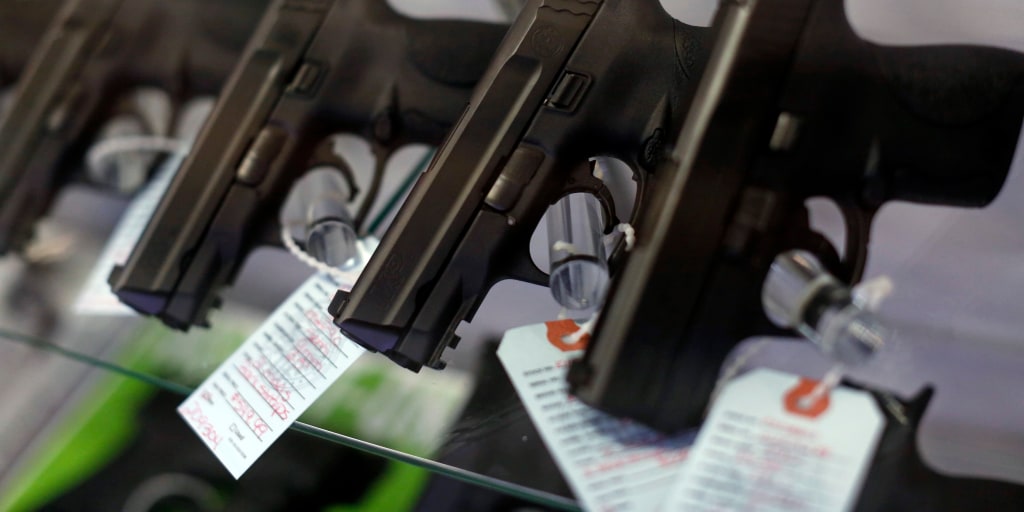Firearms have overtaken car crashes as the main cause of premature deaths due to trauma in the US since 2017, finds research published online in the journal Trauma Surgery & Acute Care Open.
In 2018 men made up more than 85% of premature firearm deaths, with firearm suicides highest in older white men, and firearm homicides highest in young black men.
Traumatic injuries remain the leading cause of death in the US for people up to the age of 46, with car crashes the single largest cause of premature death.
Firearm deaths, however, have been steadily increasing over the past decade, and the researchers wanted to find out if these have become the leading cause of premature death associated with trauma.
They analysed data from annual National Vital Statistics Reports (NVSR) for the years 2009 to 2018, the latest year for which data were available, and death certificates for each of the US states.
A database of firearm-related deaths was generated using these annual reports, while potential years of life lost were calculated by subtracting the age at death from the standard age of 80.
These firearm deaths were further stratified according to age, gender, injury intent, and geographical region—North, South, Midwest, and West—and compared with those for car crashes.
During the study period, the total 10-year cumulative years of potential life lost for car crashes and firearms added up to 12.9 million and 12.6 million, respectively.
But firearm deaths surpassed those of car crashes as the leading cause of traumatic death in 2017, with 1.44 million years of potential life lost compared to 1.37 million.
This trend continued into 2018, with 83,037 more potential years of life lost attributed to firearms than to car crashes.
Between 2009 and 2018, the annual percentage change in firearm deaths increased by 0.72 every year, while the annual percentage change in car crash deaths fell by 0.07 every year.
Analysis of injury intent showed that firearm suicides increased throughout the 10-year study period. They accounted for 18,735 trauma deaths in 2009, rising to 24,432 in 2018, and a parallel increase in potential years of life lost, rising from 571,720 to 741,869 in 2018.
Firearm homicides also increased, rising from 11,493 deaths in 2009 to 13,958 in 2018, equivalent to 633,656 years of potential life lost in 2018, up from 554,260 in 2009.
Firearm deaths inflicted by the police or other law enforcement agents in the line of duty remained relatively static, with 333 deaths in 2009 and 539 in 2018.
Men made up most of the 38,929 firearm deaths in 2018, accounting for 33,258 (85+%).
A breakdown of ethnicity showed that firearm suicides were highest among white men in 2018, comprising nearly half (49%) of total firearm deaths, with those among the over 45s 46% higher than among the under 45s. Firearm homicides were highest among black men, comprising 18% of all firearm deaths.
Cumulatively, white men lost a total of 4.95 million potential life years due to firearm suicide over the 10 year period, equal to more than a third of the total for all firearm deaths, and more than double the figure attributable to firearm homicide: 1.7 million.
Black men lost the most potential life years due to homicide: a cumulative total of 3.2 million, compared with 0.4 million due to firearm suicide. Most firearm homicide deaths were among 15-24 year olds.
While the cumulative figure of potential years of life lost due to firearm homicide was lower among black men than those attributable to firearm suicide among white men, the younger age at which black men died increased the total for each death.
On average, firearm homicides among black men accounted for 50.5 years of potential life lost compared with just over 29 for firearm suicide among white men.
White women lost a total of 1.3 million potential years of life to firearm deaths throughout the study period, over half of which were firearm suicides.
Firearm suicides among women increased by 31.5% over the 10 year period; homicides rose by just under 10%. Black women lost more potential years of life to firearm homicide than to firearm suicide.
Regionally, the South had the highest cumulative total of potential years of life lost due to firearms (5.7 million), followed by the Midwest and the West. The Northeast had the lowest cumulative total: 35,789 years of life lost.
Official data show that in 2018 there were over 3 million registered firearms in the South, with Texas and Florida the two states with the highest number of registrations in the US.
The researchers acknowledge that the current average life expectancy in the US is 78.7 years, rather than 80, which they used for their calculations.
Nevertheless, the trend in premature trauma deaths associated with firearms is clear, they point out. The US alone is estimated to have 393.3 million firearms compared with 16.8 million in Mexico and 12.7 million in Canada.
They conclude: “Suicide is responsible for the most [years of potential life lost] due to firearm deaths, and continues to increase in the USA at an alarming rate. The predominant populations that are affected by firearm deaths are older white males secondary to suicide, and younger black males secondary to homicide.
“More resources should be redirected and allocated to these at-risk populations to decrease this potentially preventable cause of death and years of life lost.”


